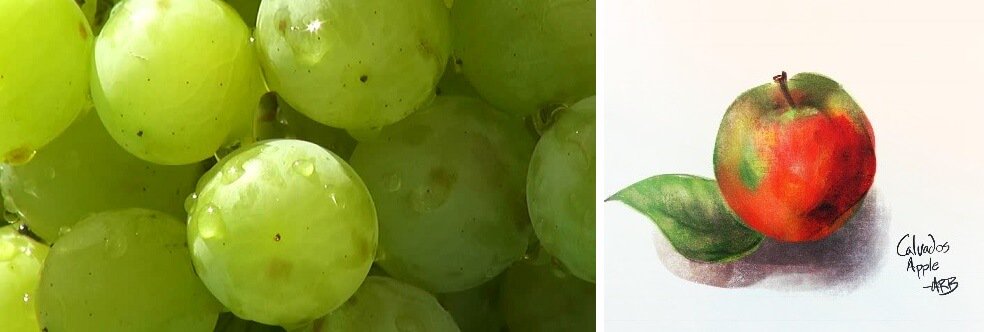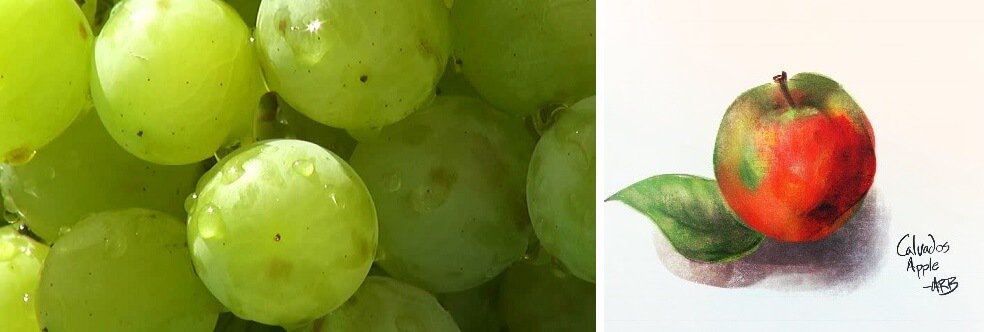Not All Grapes Become Wine
Have you ever considered an alternative path for grapes; one that leads to something other than wine? Are you ready to acknowledge that not all wine stays as wine, and some wines actually continue their production journey to become brandy…and a few very special grapes – are destined to become Cognac?
Only One Cognac
While Cognac is part of the brandy family, it has its own pedigree. The distinguishing characteristics can be found in the vineyards of the small French town that lends its name to this noted beverage: Cognac!
Cognac is located in the areas of Charente and Charente-Maritime where production is controlled by the French appellation DOC following a process and labeling requirements that are mandated by law. The specific and dominant grape used to make Cognac is Ugni blanc (aka Saint-Emilion and Trebbiano) and at least 90 percent of the grapes used must be grown in Cognac, if the Cognac brand is going to be affixed to the product; however, up to 10 percent can be from other grapes including Folignan, Jurancon blanc, Meslier St. Francois (or Blanc Rame), Select Montils or Semillon (if it is going to be CRU).
To be considered Cognac, the brandy must be distilled twice in copper pot stills and aged a minimum of 2-years in French oak barrels from Limousin or Troncais. Cognac matures in the same manner as whiskies and wines although Cognacs spend longer periods of time “on the wood” – beyond minimum legal requirements. After the distillation and during the aging process it is also known as eau de vie.dor, a part of the Spanish Armada (it sank off the coast of Normandy in the 16th century). READ THE FULL ARTICLE AT WINES.TRAVEL.
Dr. Elinor Garely. Editor-in-Chief, Wines.Travel and TourismExecutives.com; Reporter, eturbonews.com and etn.travel
•Expert Witness: Hospitality, Travel /Tourism industry with TASA Technical Advisory Services for Attorneys
•Award winning international journalist/consultant
Former Professor of Management/Marketing; Coordinator - Hotel, Travel /Tourism program - CUNY, BMCC
•Former Professor - Business Management /Marketing faculty - Long Island University, NYU Stern School of Business, University of Shanghai, PRC
•International marketing and management executive with Playboy Clubs and Hotels, the Copacabana and related restaurants/ clubs; Helmsley Spear (Hospitality Consultant Division), Babcock and Wilcox
•Developed/implemented first hotel joint venture in Russia; first hotel/restaurant management program at University of Shanghai, PRC; designed/ implemented hotel management training programs for hotels in the United States, China (PRC), Malaysia and Caribbean
•Received Ford Foundation grant to study role of Community Colleges in PRC; consultant to the government of Kenya to explore new economic development opportunities in the USA
•Research includes an analysis of Guest Safety/Security at 5-Star/Luxury Hotels in Bangkok, Thailand, Cape Town, South Africa and Miami, Florida (Dissertation); Child Trafficking; eMarketing and We Know What Women Want in Hotels
•Former Real Estate Sales/Broker: Hotel Industry
•Doctorate in International Business from the University of Sarasota (Florida): focus on hotel, travel and tourism and guest safety/security
•MBA in International Marketing and Business Management from New York University, Stern School of Business with Honors from the American Marketing Association; Former Member of BGS Honor Society
• BS Degree, Lesley College, Art / Education
•Former Member - BOD, Sutton Area Community organization, International Food Wine & Travel Writers Association and HSMAI. Current Member - NY Travel Writers Association, Princeton Club of New York


